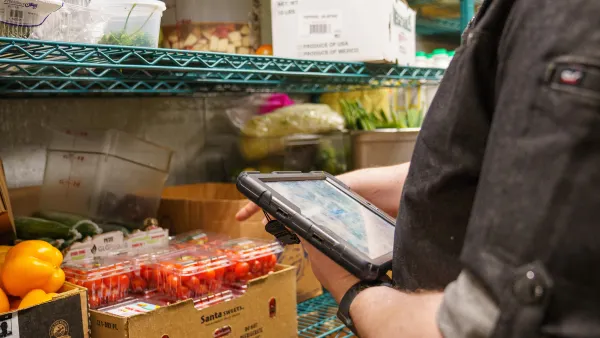UPDATE: Sept. 16, 2020: Dave and Buster's has also laid off 311 employees across its three Michigan stores, according to state WARN notices filed on Sept. 14. These three locations are temporarily closed.
Dive Brief:
- Over the past several days, Dave & Buster's has announced at least 1,058 layoffs across six states. The eatertainment chain is cutting positions in Oregon (84), Louisiana (97), New Jersey (107), North Carolina (229), Colorado (234) and Massachusetts (307), according to Worker Adjustment and Retraining Notification notices. Dave & Buster's did not reply to Restaurant Dive's request for comment by press time. The cuts are described as permanent layoffs, and will be effective Nov. 8.
- The majority impacted Dave & Buster's locations are listed as temporarily closed on the company's website. The chain's Wayne, New Jersey location is still open and its three Massachusetts locations are slated to open before the end of the month. It's possible the number of layoffs may rise if additional notices to come from the chain, as the WARN Act requires 60 calendar days' written notice for listings.
- These layoffs follow the chain's move to furlough 1,500 employees in April and more recently its Q2 earnings, in which the company reported same-store sales declines of 87% for the period. Revenue also dropped 85% to $50.8 million. In an earnings call transcript, CEO Brian Jenkins said the chain is "maximizing sales by continuing to refine [its] lean operating model."
Dive Insight:
Dave & Buster's staggering same-store sales decline and the scope of these layoffs reflect the toll coronavirus restrictions and closures have taken on the eatertainment category. As of Sept. 9, the chain had reopened 89 of its 137 stores — located in 40 states, Puerto Rico and Canada — with reduced hours and limited capacity. These reopened locations offer socially distant seating and game configurations and a reduced food menu.
“We did not foresee how significantly and for how long a time the pandemic and related government lockdown orders would impact our business. We also did not foresee that lockdown orders, initially issued for short durations in only a few cities, would spread throughout the country and be repeatedly extended,” Kathryn Rainey, Dave & Buster's senior director of human resources, told Colorado in a WARN letter.
"We have made steady progress reopening our stores while rapidly implementing numerous initiatives that are accelerating our business recovery and positioning us for long-term success," Jenkins said in the company's Q2 earnings release. But it's possible that more layoff announcements could crop up for stores that are still temporarily shuttered, as Dave & Buster's doesn't have off-premise channels to export its offerings.
Jenkins added that 61 of 84 stores that had reopened in August generated positive store-level EBITDA, and linked this performance to the chain's pared down labor model. "Keep in mind that some portion of our current lean expense saving initiatives will naturally dissipate as revenues recover more fully and we reinstitute certain labor, operational and marketing elements of our business," he said. Operating payroll and benefits decreased 83% to $13.8 million compared to Q2 2019 due to furloughs and reduced labor at reopened locations.
Dave & Buster's is far from the only major chain struggling in this space, however. Punch Bowl Social lost Cracker Barrel as an investor in March at the start of the pandemic, and was forced to lay off nearly all of its restaurant and corporate employees. The chain was also on the brink of foreclosure, and permanently closed two of its locations earlier this summer when it couldn't settle on new lease terms with a landlord. Like Dave & Buster's, the chain has begun reopening locations with modified floor plans.
Chuck E. Cheese parent CEC Entertainment filed for Chapter 11 bankruptcy protection earlier this summer after dining room closures gutted its sales, and the chain also filed a motion with the U.S. Bankruptcy Court for the Southern District of Texas to let go of 45 leases at closed or underperforming stores. Twenty-seven of these locations were closed because of COVID-19 disruption. The chain, however, recently landed $200 million in debtor-in-possession financing from first lien lenders.
It's unclear how a reduced labor model will impact Dave & Buster's store operations as the pandemic eventually ebbs. But for now, the chain can recoup some cost savings from its employee reductions, although this may not make much of an impact as 48 locations remain temporarily closed.












